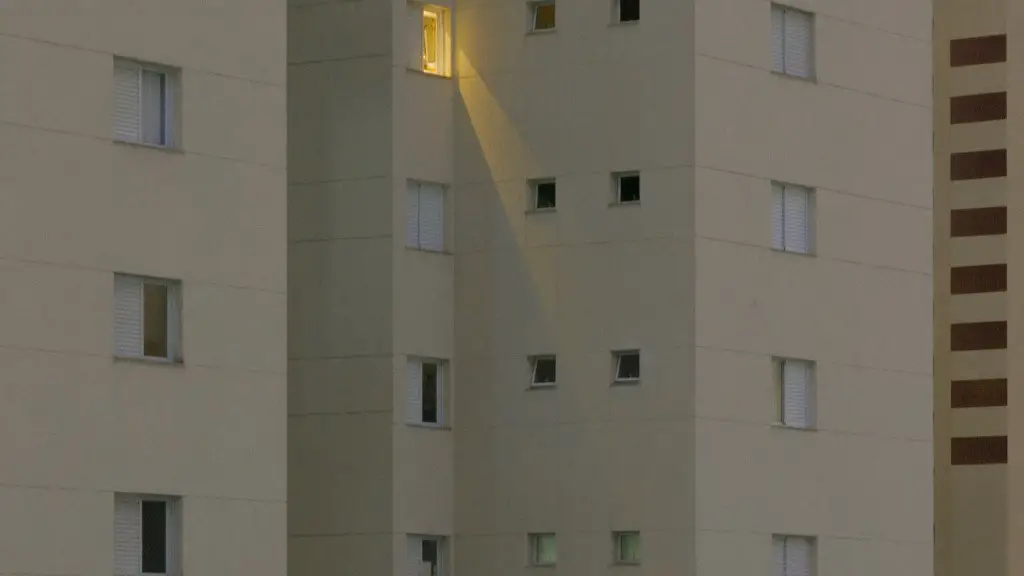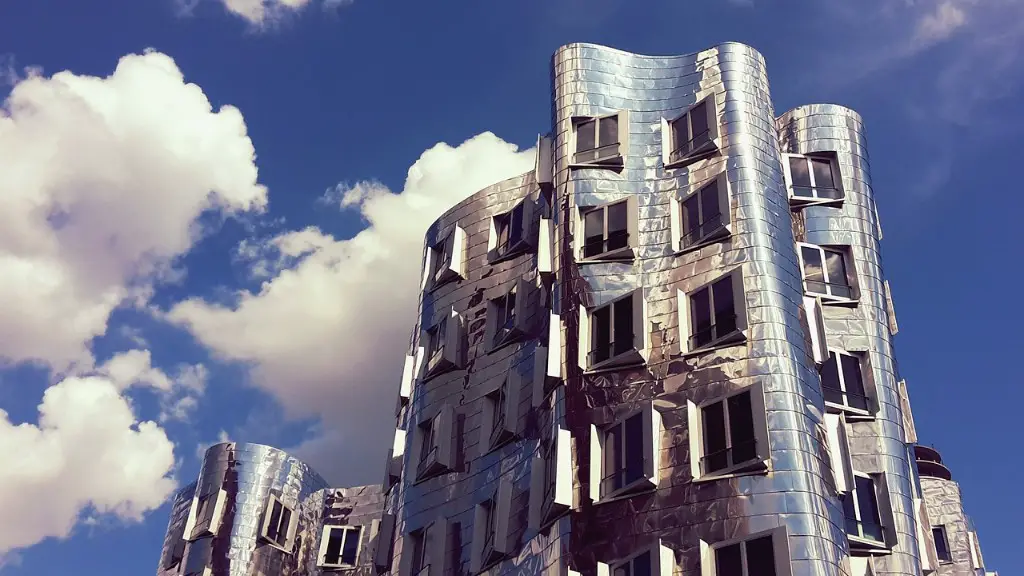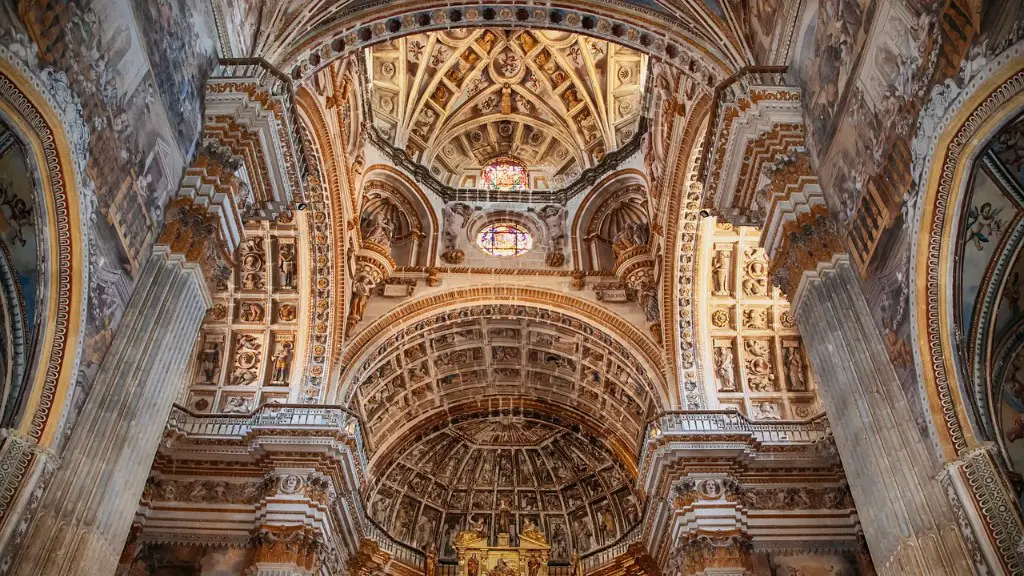Why Did Egyptian Art And Architecture Often Depict Animals?
Since ancient times, art and architecture in Egypt have had close ties to religion and beliefs that often reminded the people of the power of the divine. This is why there has always been a strong presence of depictions of animals in these works. Animals were considered sacred, especially those with ancient links to gods or other significant figures in Egyptian lore.
The presence of animals in artwork and architecture wasn’t limited to just one species. Egyptians had a huge appreciation for the diverse range of creatures in their environment. Symbols of some of the most well-known animals, such as oxen, cats, falcons, eagles, snakes and crocodiles, were prevalent. These animals were often seen as guardians and protectors, so they were often shown in pairs, representing strength and power.
One reason why animals were widely used in Egyptian art is because they symbolised transitions and major life events. Animals were featured in funerary art as a symbol of rebirth, as well as in many other pieces of artwork, representing the journey of life and the various stages of being. Animals also had special symbolic meanings, such as the lion being an emblem of fearlessness, strength and courage.
Another major reason for the presence of animals in art and architecture was to represent gods and goddesses. For example, the ancient Egyptians worshipped many gods and goddesses, each of which was represented by a certain animal. The national symbol of Egypt, the scarab beetle, was associated with the god, Khepri. Similarly, the goddess Bastet was represented by a cat and the god Horus by the falcon. This kind of association between gods and beasts of the natural world was common, and it’s likely that the Egyptians incorporated animals into their artwork and architecture as a way to demonstrate their admiration of the gods.
The symbolism of animals in art and architecture also informed the way that pharaohs, nobles and other members of society were depicted in artwork. Many of the most famous images of ancient Egypt, such as the Narmer Palette and the Great Sphinx, feature animals alongside human figures. This was to symbolise the importance of the message being conveyed, as well as to draw comparisons between the might of Egypt’s rulers and the strength of animals.
Animals were also used as symbols of prosperity, security and protection in Egypt. Fertile lands, safe homes and safe travel were all associated with animals, so animal imagery was seen in art and architecture to represent these blessings. This kind of symbolism was used to appeal to the gods to bring good luck and fortune to the people of Egypt.
It’s clear to see that the presence of animals in Egyptian art and architecture was so integral not just to show representations of gods and goddesses, but to also demonstrate the power and importance of the rulers of the time. Animals have always been a major symbol of stability and strength in Egyptian culture, so it’s no surprise that they were featured so prominently in artwork and architecture.
Symbolism of Animals in Art and Architecture
As mentioned before, animals were featured in artwork and architecture for many reasons – as depictions of gods and goddesses, to create narrative scenes of Ancient Egypt, to represent life and death, and to be symbols of protection and prosperity. Animals were seen as powerful, wise creatures who could bestow blessings on those who paid heed to their symbolic presence. Many of these animals were chosen because of their traditional associations with the divine, and some were even seen as incarnations of gods and goddesses.
The use of animals in art and architecture allows viewers a glimpse into the richly spiritual world of ancient Egypt. Such depictions helped to remind Egyptians of their connection to the gods and to the afterlife. They could be symbols of divine protection, symbols of the power of fate, or symbols of the fertility of the land. Animals were often included in royal portraits and other royal artwork in order to emphasise their strength and might, similar to the gods and their divine powers.
The strong presence of animal imagery in Egyptian art and architecture also helps to inform us about ancient Egyptian daily life. Various animals had practical roles such as farming and hunting, and also held spiritual significance. This is why many of these animals were featured prominently in artwork such as pottery and temple reliefs. Scenes of common ordinary activities such as hunting and farming were often used to provide glimpses of how people lived in the past.
Animals were also used to tell stories. Ancient Egyptian gods were often portrayed as having animal forms, and it was thought that animals had special powers to help humans in their daily lives. For example, many gods were represented as birds, which were symbols of freedom and the ability to travel between worlds. This is why we see a lot of bird imagery in ancient Egyptian art.
The presence of animals in Egyptian art and architecture gives us an insight into the importance of religion and spiritual beliefs to Ancient Egyptians. The gods and goddesses were deeply intertwined with animals and their images often featured prominently in artwork, providing us with a fascinating insight into the values and beliefs of the people who lived in ancient Egypt.
Influence of Animals on Egyptian Art and Architecture
Animals played an important role in Egyptian art and architecture throughout its history. Animal-shaped motifs were used to decorate buildings and create scenes, and animal images featured prominently in artwork. Not only did animals represent gods and goddesses, but they were also used to communicate complex spiritual ideas and to provide a visual representation of the power and prosperity of Ancient Egypt.
Animal motifs were often used to create complex designs and scenes, with the main purpose of conveying spiritual beliefs. Egyptian art and architecture were strongly influenced by religion, and animals were seen as important symbols in this regard. Many of the most famous examples of Egyptian art, such as the Great Pyramid, have animal motifs.
The use of animal motifs helped to illustrate the spiritual importance of animals in ancient Egypt. They were seen as guardians and protectors, and their presence in artwork was a reminder of the power of the gods and the divine connection of the people. Animals represented themes such as fertility, life, power and strength.
Many of the animal motifs featured in Egyptian art and architecture were specific to particular Ancient Egyptian gods. For example, the cat was often associated with the goddess Bastet, the falcon with the god Horus and the crocodile with the god Sobek. In this way, artwork featuring animals served to remind viewers of the spiritual connection they had with their gods and the importance of honoring their deities.
The use of animals in art and architecture was not only a spiritual practice, but also a practical one. Animals such as oxen and horses were used in farming, while hunting was also an important source of food in Ancient Egypt. Animals were seen as vital to the survival of Egyptian society, and their images in art would have helped to remind people of this fact.
Animals in Art and Architecture from an Academic Perspective
Academics have long been fascinated by the presence of animals in Ancient Egyptian art and architecture. The notion that animals represent gods and goddesses, as well as certain aspects of life and death, is one that has been explored in many works of academic literature.
Studies have also been conducted to explore the role of animals in Ancient Egyptian societal beliefs and practices. Such studies have demonstrated the importance of animals to Egyptian culture, not only being seen as symbols of strength and fertility, but also of a connection to the divine.
The use of animals in artwork and architecture has also been widely discussed in terms of symbolism. Scholars have examined the various meanings associated with different animal images, as well as how they were used to convey a variety of different messages. This has resulted in a greater understanding of the role of animals in Ancient Egyptian culture, as well as implications on a more contemporary level.
It is also interesting to note the impact of animals in Ancient Egyptian art and architecture on modern art, both in terms of composition and visual style. Artists have long been inspired by the depictions of animals in Ancient Egyptian works, leading to the creation of a range of Neo-Egyptian works and the popularising of Ancient Egyptian-style themes in modern art and design.
Conclusion
The prevalence of animal imagery in art and architecture from Ancient Egypt is an integral part of understanding their culture. Animals were used not only to represent gods and goddesses, but also to convey messages about life, death and the importance of protecting oneself from danger. They also held strong symbolic meanings and had a practical role in the lives of the people of Ancient Egypt. All of this serves to show us the complexity of Ancient Egyptian culture, and the strong spiritual beliefs held by the people.





